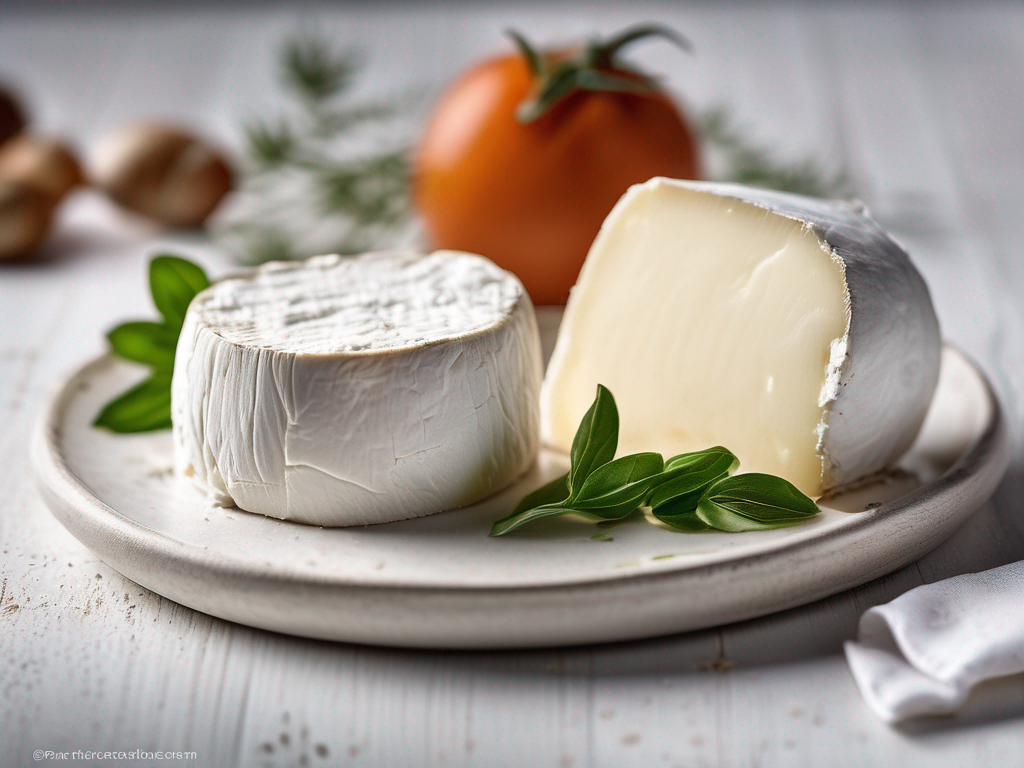
The Best Way to Store Goat Cheese to Prevent Spoilage
Get Your Free Food Safety Cheat Sheet
30 most common foods with instant answers. Print it and stick it on your fridge—completely free!
The Best Way to Store Goat Cheese to Prevent Spoilage
Goat cheese is a versatile and delicious dairy product that adds a unique flavor to various dishes. To enjoy the freshness and taste of goat cheese for an extended period, proper storage is crucial. Improper storage can lead to spoilage, affecting the quality and safety of the cheese. In this blog post, we will discuss the best way to store goat cheese to prevent spoilage and ensure its longevity. (Goat cheese)
Understanding Goat Cheese Storage
Before delving into the storage methods, it's essential to understand the factors that contribute to the spoilage of goat cheese:
Factors Affecting Goat Cheese Spoilage
-
Temperature: Goat cheese is sensitive to temperature fluctuations. Exposure to high temperatures can cause the cheese to soften or melt, while cold temperatures can affect its texture and flavor.
-
Humidity: Excessive moisture can promote mold growth on the surface of the cheese, leading to spoilage.
-
Air Exposure: Goat cheese is prone to absorbing odors from other foods in the refrigerator. Additionally, exposure to air can dry out the cheese, affecting its taste and texture.
Best Practices for Storing Goat Cheese
To ensure the longevity and freshness of goat cheese, follow these best practices for storage:
1. Store in Original Packaging
- Keep the goat cheese in its original packaging or wrap it tightly in wax paper or parchment paper to prevent moisture loss.
2. Use Airtight Containers
- Transfer the cheese to an airtight container to protect it from air exposure and odors in the refrigerator.
3. Optimal Temperature
- Store goat cheese in the refrigerator at a consistent temperature of around 40°F (4°C) to maintain its texture and flavor.
4. Avoid Freezing
- Avoid freezing goat cheese, as it can alter the texture and taste of the cheese. Freezing can cause the cheese to become crumbly or mushy when thawed.
5. Keep Away from Strong Odors
- Store goat cheese away from strong-smelling foods in the refrigerator to prevent it from absorbing unwanted odors.
6. Check Expiry Date
- Always check the expiry date on the packaging and consume the cheese before it expires to ensure its freshness.
Additional Tips for Storing Goat Cheese
Here are some additional tips to enhance the storage of goat cheese:
- Proper Wrapping
- Ensure that the cheese is properly wrapped to prevent moisture loss and contamination from other foods.
- Labeling
- Label the container or packaging with the date of purchase to track the freshness of the cheese.
- Cheese Paper
- Consider using cheese paper, which allows the cheese to breathe while protecting it from moisture and odors.
- Rotating Stock
- Rotate your goat cheese stock regularly, consuming the older pieces first to maintain freshness.
Conclusion
Proper storage is essential to maintain the quality and safety of goat cheese. By following the recommended storage practices, you can prolong the shelf life of goat cheese and enjoy its delicious flavor in your favorite recipes. Remember to store the cheese in a cool, dry place, away from strong odors, and always check the expiry date before consumption. With the right storage methods, you can savor the rich taste of goat cheese for an extended period. [Learn more about goat cheese](/food/goat cheese) and experiment with different storage techniques to find what works best for you. (Goat cheese)
Authoritative Food Safety References
These agencies and university labs inform every tip and health precaution we publish.
USDA FoodKeeper – Cold Storage Guidelines
Official refrigerator, freezer, and pantry timelines maintained by the U.S. Department of Agriculture.
Visit USDA FoodKeeperFDA Produce Safety Rule & Grower Guidance
Field-to-fridge handling practices that prevent contamination of fruits, vegetables, and leafy greens.
Visit FDA Produce SafetyCDC Foodborne Illness Prevention Hub
Surveillance-backed guidance on pathogens, symptoms, and steps to reduce foodborne illness risk.
Visit CDC Food SafetyUC Davis Postharvest Technology Center
University research detailing optimal storage atmospheres for produce after harvest.
Visit UC Davis PostharvestPenn State Extension – Home Food Preservation & Safety
Peer-reviewed extension bulletins on safe canning, chilling, and reheating practices.
Visit Penn State ExtensionGet Your Free Food Safety Cheat Sheet
30 most common foods with instant answers. Print it and stick it on your fridge—completely free! Want more? Upgrade to the complete guide with 70+ foods.
Scan your food directly and get instant safety info using our AI-powered camera feature.